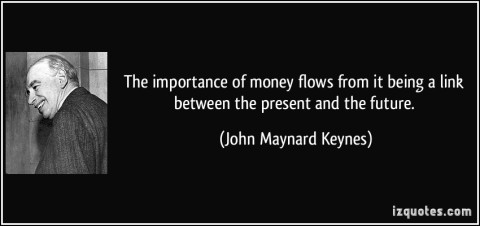Krugman and ‘neutral money’ Paul Krugman has repeatedly over the years argued that we should continue to use mainstream hobby horses like IS-LM and AS-AD models. Here’s one example: So why do AS-AD? … We do want, somewhere along the way, to get across the notion of the self-correcting economy, the notion that in the long run, we may all be dead, but that we also have a tendency to return to full employment via price flexibility. Or to put it differently, you do want somehow to make clear the notion (which even fairly Keynesian guys like me share) that money is neutral in the long run. I seriously doubt that Keynes would have been impressed by having his theory being characterized by catchwords like “tendency to return to full employment” and “money is
Topics:
Lars Pålsson Syll considers the following as important: Economics
This could be interesting, too:
Lars Pålsson Syll writes Schuldenbremse bye bye
Lars Pålsson Syll writes What’s wrong with economics — a primer
Lars Pålsson Syll writes Krigskeynesianismens återkomst
Lars Pålsson Syll writes Finding Eigenvalues and Eigenvectors (student stuff)
Krugman and ‘neutral money’
Paul Krugman has repeatedly over the years argued that we should continue to use mainstream hobby horses like IS-LM and AS-AD models. Here’s one example:
So why do AS-AD? … We do want, somewhere along the way, to get across the notion of the self-correcting economy, the notion that in the long run, we may all be dead, but that we also have a tendency to return to full employment via price flexibility. Or to put it differently, you do want somehow to make clear the notion (which even fairly Keynesian guys like me share) that money is neutral in the long run.
I seriously doubt that Keynes would have been impressed by having his theory being characterized by catchwords like “tendency to return to full employment” and “money is neutral in the long run.”
One of Keynes’ central tenets — in clear contradistinction to the beliefs of mainstream economists — is that there is no strong automatic tendency for economies to move toward full employment levels in monetary economies.
Money does not matter in mainstream macroeconomic models. That is true. According to the ‘classical dichotomy,’ real variables — output and employment — are independent of monetary variables, and so enables mainstream economics to depict the economy as basically a barter system.
But in the real world in which we happen to live, money certainly does matter. Money is not neutral and money matters in both the short run and the long run:
Banks are authorized to create credit, ex nihilo (“out of nothing”) so credit (money) cannot be neutral. In creating credit, a bank creates money that a borrower uses to purchase goods and services that add to aggregate demand and economic growth. Banks are not limited to acting only as intermediaries that move money from savers to borrowers. Importantly, banks also determine how credit and money are allocated. In the real world, money creation distinguishes banks from other financial intermediaries (e.g., shadow banks) that can extend credit but do not possess the authority to create money. Within the financial sector, only banks are granted this authority. Money is a form of credit, an obligation to pay. In Werner’s (2012) words, “banks are the creators of the money supply” and “this is the missing link that causes credit rationing to have macroeconomic consequences.” In short, finance (banking, money and credit) matter!

